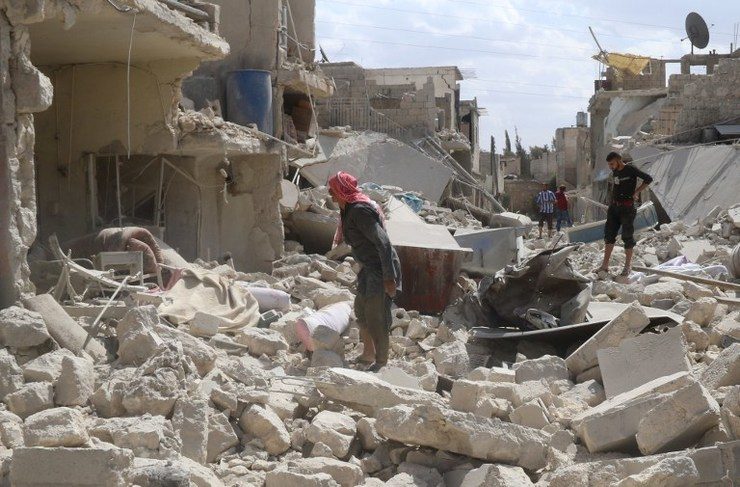SUMMARY
This is AI generated summarization, which may have errors. For context, always refer to the full article.

The report overseen by Madani, an NGO focused on civil society peace-building in Syria, examined 35 negotiations for local ceasefires in the past 3 years.
It concludes that the truces “offer the best hope of alleviating the suffering of the Syrian people – by reducing levels of violence, providing safe havens within Syria and offering access to humanitarian assistance.”
Rim Turkmani, the head of Madani and chief author of the report, said it was undertaken to address various misconceptions about local ceasefire measures.
“First, there is a conception that the Syrians are only killing each other, but on the ground you find people taking huge risks to build peace,” she told Agence France-Presse.
“Second, there is this perception that everyone is against any negotiations with the regime when, from the very beginning, there have been talks between the most extreme elements,” she said.
“Third, there is a sense that what is happening on the ground is slightly irrelevant and the focus is on top-level talks. But nothing can change without agreements on the ground.”
Local ceasefires have been negotiated in several areas across Syria, bringing a measure of security and relief to neighborhoods riven by conflict.
Siege tactic ‘blackmail’: activists
The Damascus government has publicly thrown its weight behind the idea, with President Bashar al-Assad telling Agence France-Presse in January that they could be “more important” than high-level peace talks.
But activists point out that negotiations often come only after months of government siege and bombardment, accusing the regime of blackmailing their way to the truces.
The report acknowledged that siege tactics motivated ceasefire discussions in some places and that local truces have at times “been co-opted as part of (a) surrender policy or used as a military tactic.”
But it added that in many cases people were driven by “the basic need for stability and control” and that the ceasefires “often delivered tangible improvements on the ground that top-level talks have singularly failed to achieve.”
The report’s release comes as the UN’s peace envoy for Syria, Staffan de Mistura, is in Damascus to discuss his proposal for so-called “freeze zones.”
The idea appears similar to the local ceasefire deals, though De Mistura has yet to elaborate on the details of his plan.
Turkmani said local ceasefires benefited both sides, and were key to realizing “there is no military solution.”
“Each side has interests, and they wouldn’t negotiate if they thought a military solution was possible,” she said.
The report, which was co-authored by several individuals who have taken part in negotiating local truces, said the greatest obstacles included regional interference from backers of both sides, as well as the absence of trusted third parties to mediate.
It urged the international community to back local truces and end the flow of arms to both sides, and called on parties to the conflict to negotiate in good faith and abide by agreed deals. – Rappler.com
Add a comment
How does this make you feel?
There are no comments yet. Add your comment to start the conversation.